Man's Shirt Or Tunic Item Number: E2030-0 from the National Museum of Natural History
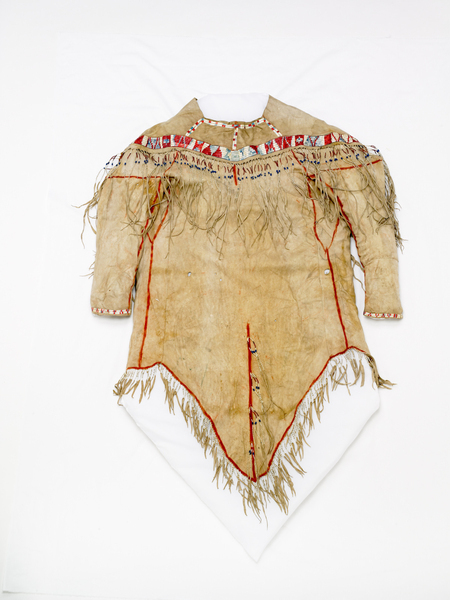

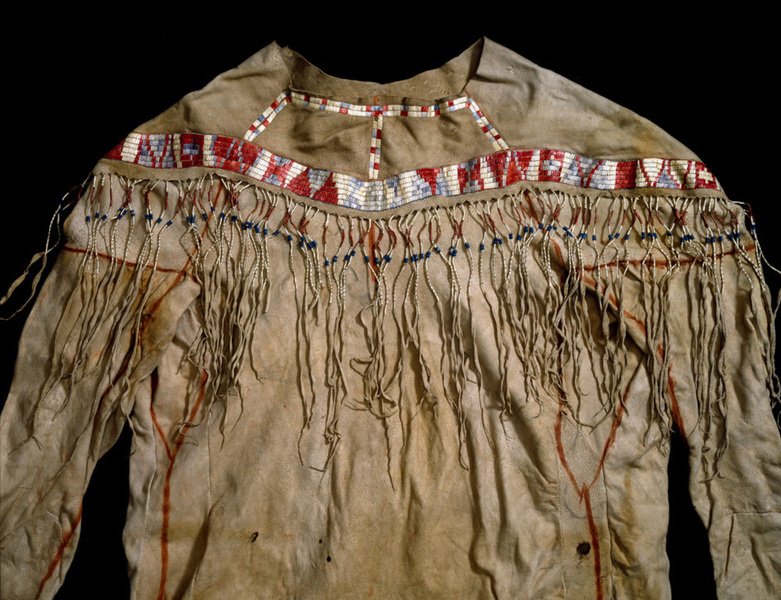
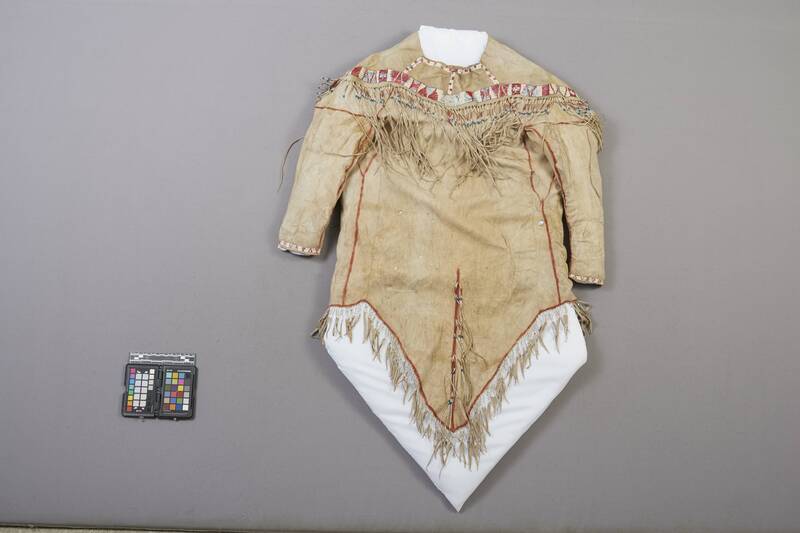
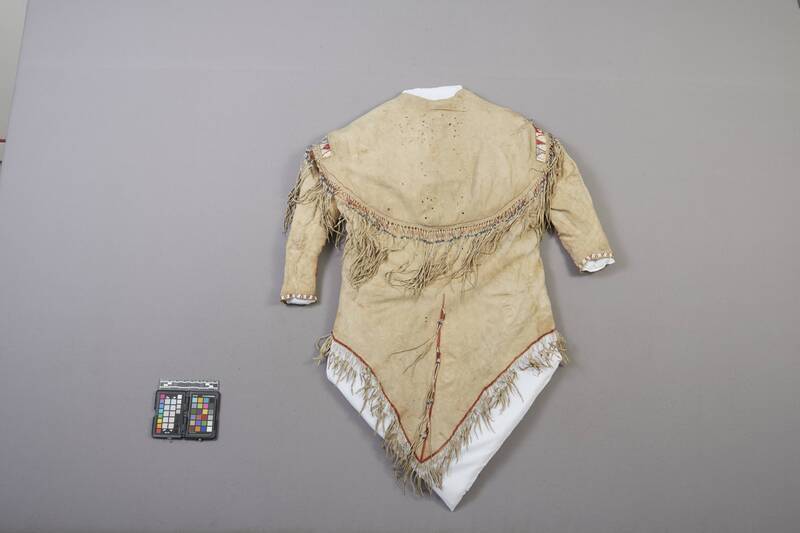

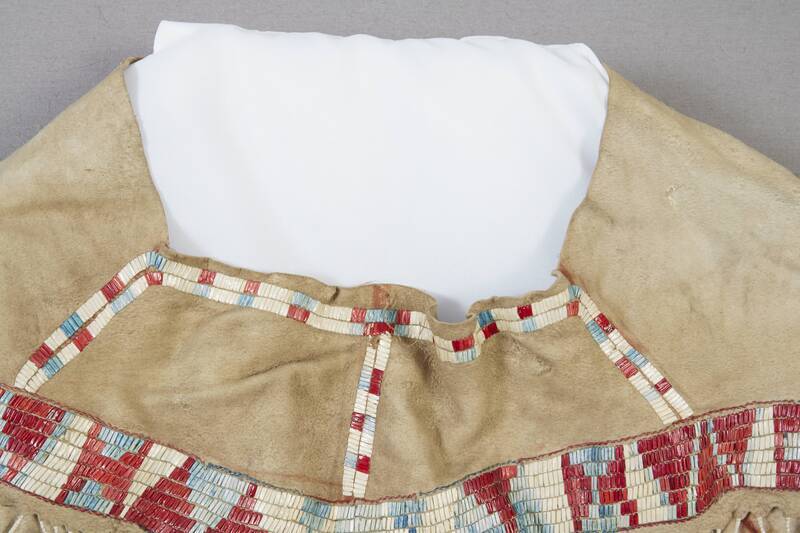

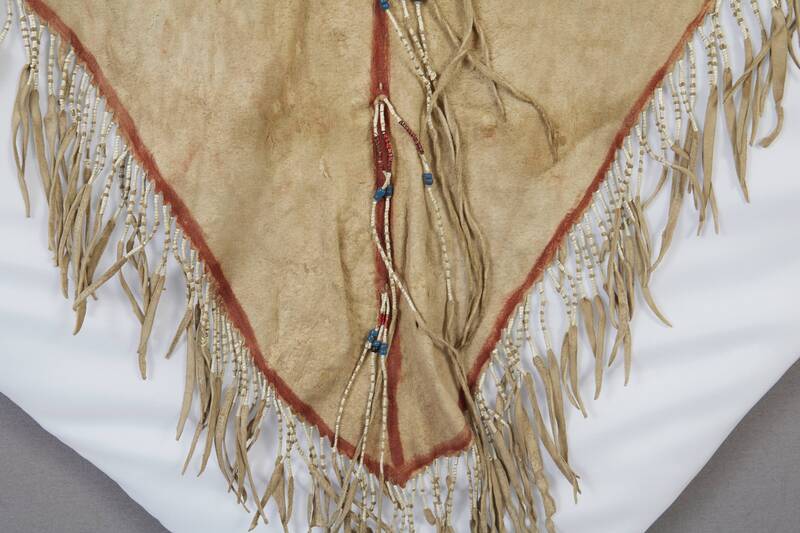
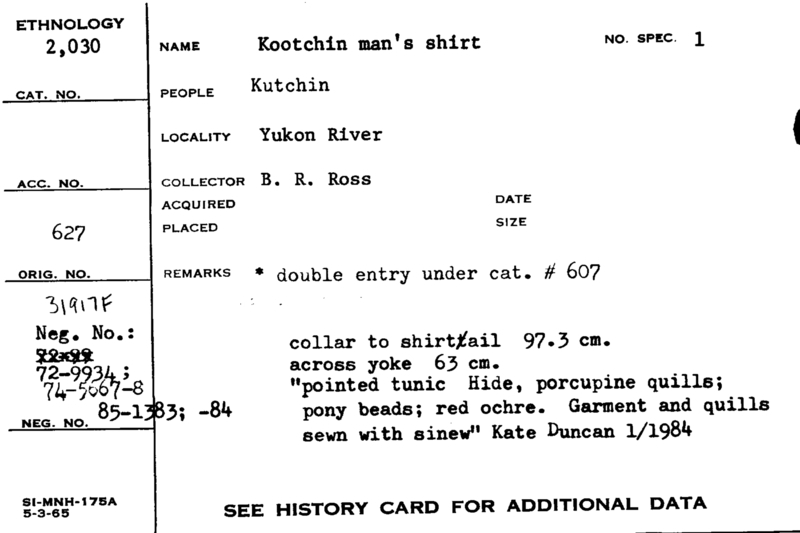

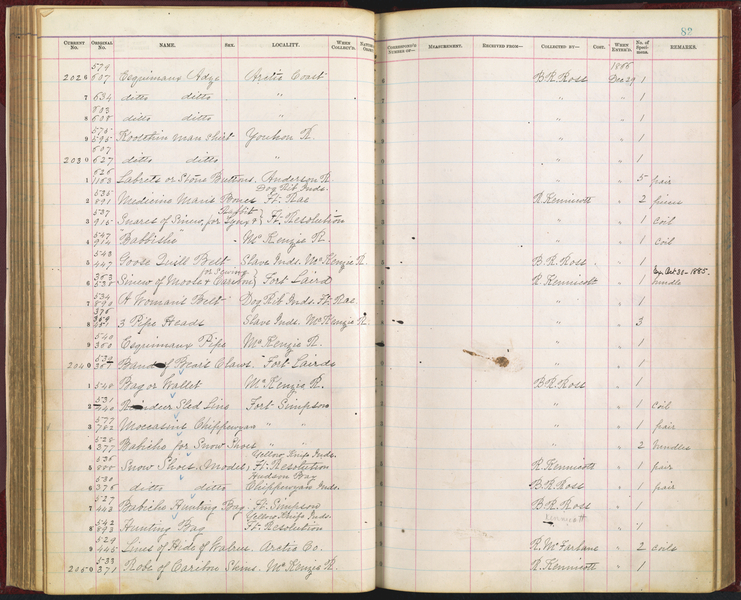
Notes
FROM CARD: "*DOUBLE ENTRY UNDER CAT. #607. COLLAR TO SHIRT TAIL 97.3 CM. ACROSS YOKE 63 CM. "POINTED TUNIC HIDE, PORCUPINE QUILLS; PONY BEADS; RED OCHRE. GARMENT AND QUILLS SEWN WITH SINEW" KATE DUNCAN 1/1984."Source of the information below: Smithsonian Arctic Studies Center Alaska Native Collections: Sharing Knowledge website, by Aron Crowell, entry on this artifact http://alaska.si.edu/record.asp?id=9 , retrieved 8-9-2012: Tunic, Gwich'in Athabascan. Russian explorer Lavrentiy Zagoskin wrote in 1842-44 that Athabascan peoples of the Alaskan interior were "passionately fond of finery and bright colors."(1) This man's summer tunic, made of soft, lightly smoked caribou hide and embroidered with dyed porcupine quills, came from Gwich'in people of the upper Yukon-Porcupine River region, an area that spans both sides of the Alaska-Canada border. Hudson's Bay Company fur trader Bernard Ross acquired this garment for the Smithsonian in the 1850s or early 1860s, at a time when trade beads were still scarce and Gwich'in skin sewers decorated most clothing with geometrically-patterned bands of dyed, flattened porcupine quills.(2) Blue and red beads are used sparingly to decorate the fringes, which are also wrapped in quills. The seams and edges are outlined with a red paint made from ocher, a highly valued iron clay or mineral that was often applied to clothing and woodwork.(3) Tunics without hoods and decorated with long fringes and colorful chest bands made of beads or quills were once standard clothing for many Athabascan peoples, including the Deg Hit'an, Koyukon, Gwich'in, Upper Tanana, Dena'ina, and Ahtna.(4) In general, the bottoms of men's tunics were pointed in both front and back and came down to about the knee; women's tunics were usually straight in front and pointed in back, and extended to the ankles.(5) They were worn in combination with moccasin trousers (pants with built-in feet), a belt, cap, and mittens.(6) Men and women carried essentials such as face paints, fire-making equipment, charms, and small personal belongings in pouches that they hung around their necks or tucked into their belts. Knives were worn in the belt or in a hanging sheath.(7) Some contemporary Athabascan artists make the old style tunics, which went out of everyday use across most of Alaska by the end of the 19th century, and also carry on the tradition of porcupine quill embroidery.(8) Shirley Holmberg from Tanana, an expert quill worker, said, "I like to use fat long quills to cover more space. These long quills are the ones you see the porcupine stick out when he is protecting himself. You have to soak the quills. If you use them just like they are, they crack." he quills are flattened and then sewn down using sinew thread.(9) 1. Michael 1967:244 2. Duncan 1989:33-38; Thompson 1994:15-17 3. Hadleigh West 1963:230; McKennan 1959:68; Osgood 1936:93, 1940:383-385; Schmitter 1985:10 4. Dall 1870:82-83; Duncan 1989; Jones 1872:320; McKennan 1959:78-80; Michael 1967:244-246; Murray 1910:84-94; Osgood 1936:44-45; Richardson 1851[Vol. 1]:377, 380; Simeone and VanStone 1986:4-5; Whymper 1868:203 5. Vanstone 1981:8-10 6. McKennan 1959:78 7. Thompson 1994:25 8. Duncan 1989:89, 1997:24-25; Steinbright 1984:90-92 9. Steinbright 1984:90-91Illus. Fig. 62C p. 91 in Van Kampen, Ukjese. 2012. The History of Yukon First Nations Art, Phd dissertation, Leiden University. https://openaccess.leidenuniv.nl/handle/1887/18984 .
Item History
What
- Name
- Man's Shirt Or Tunic
- Identification Number
- E2030-0
- Type of Item
- shirt
Who
- Culture
- Kutchin
- Received from
- Bernard R. Ross
Where
When
- Acquisition Date
- on December 27, 1866
Other
- Accession Number
- 66A00095